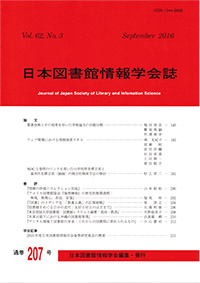Volume 60, Issue 4
Displaying 1-6 of 6 articles from this issue
- |<
- <
- 1
- >
- >|
Article
-
Article type: Article
2014Volume 60Issue 4 Pages 129-147
Published: December 31, 2014
Released on J-STAGE: April 30, 2017
Download PDF (2071K) -
Article type: Article
2014Volume 60Issue 4 Pages 148-164
Published: December 31, 2014
Released on J-STAGE: April 30, 2017
Download PDF (1724K)
Book Review
-
Article type: Book Review
2014Volume 60Issue 4 Pages 165-166
Published: December 31, 2014
Released on J-STAGE: April 30, 2017
Download PDF (327K) -
Article type: Book Review
2014Volume 60Issue 4 Pages 167-168
Published: December 31, 2014
Released on J-STAGE: April 30, 2017
Download PDF (364K) -
Article type: Book Review
2014Volume 60Issue 4 Pages 169-170
Published: December 31, 2014
Released on J-STAGE: April 30, 2017
Download PDF (313K) -
Article type: Book Review
2014Volume 60Issue 4 Pages 171-173
Published: December 31, 2014
Released on J-STAGE: April 30, 2017
Download PDF (336K)
- |<
- <
- 1
- >
- >|
